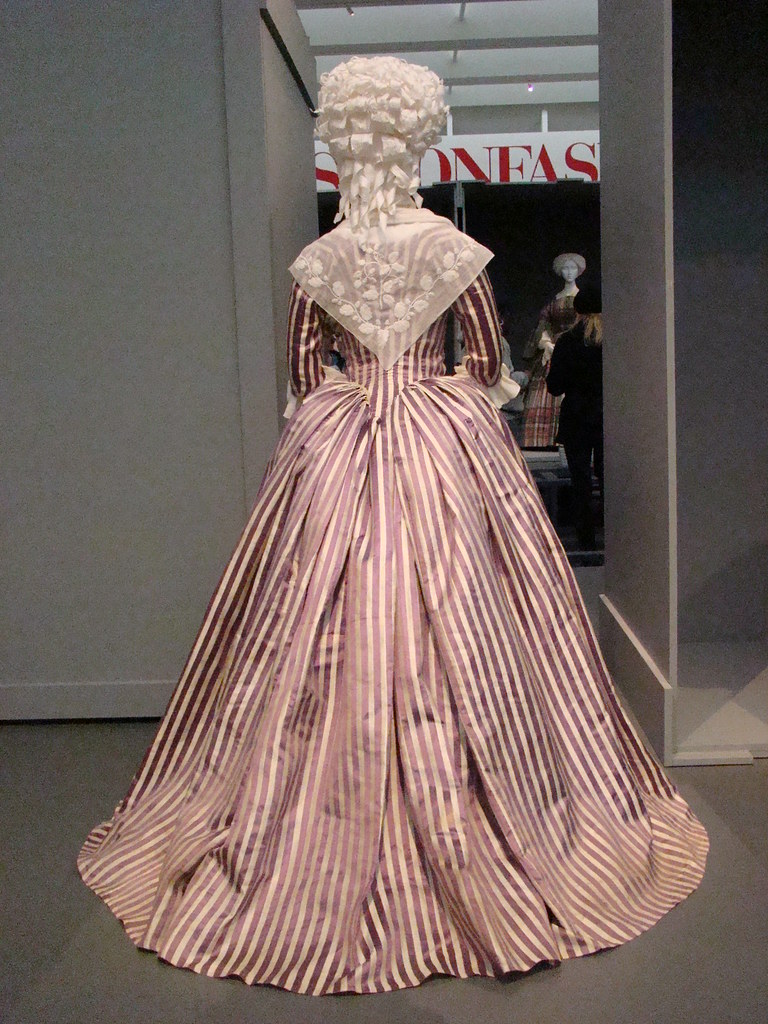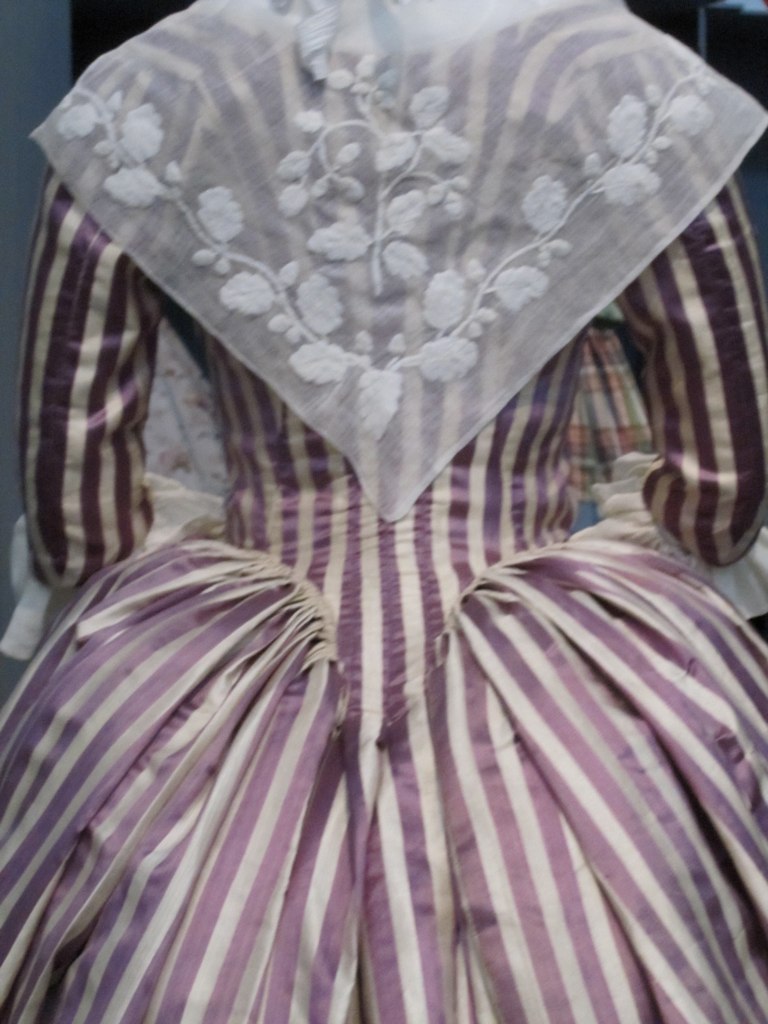I finished the striped robe à l'anglaise early in time for last Saturday's event. It was finished two days before the day I had to leave for the train that took me to the place where the event was held. I will post more about the event itself later on. Anyhow, today I got around to take some pictures of the gown on the floor for you to see. I did take photos of the fittings etc. but I didn't really have time to post on the blog until today. So here we go...
The finished gown... overall! As you can see the skirt part is a lot longer that the front because I wanted this dress to have a long train. Have I told you how much I love trains? They're definitely not practical and as I started making this I knew people would step on it a gazillion times - I was right. However, the hem took very little damage during the event and it doesn't really show at all. No dirt, nothing. That was a pleasant surprise.
Without the petticoat...
The back-side of the dress. I'm glad I took the time to tweak the back side to make it as similar on both sides as possible (stripe-wise).
And now, the construction: I started by sewing up the whole bodice together. Note there are zone front seams on the outside of the dress but it was unnecessary to have those seams in the lining as well. Also, there are bones in the center front edges and in the center back and center back side seams.
After the bodice was made, I added the rest skirt panels and pleated the upper edges with the help of needles and stitched them together with back-stitch by hand. The pleats are quite tiny, approximately 4-3 mm wide.
In the photo below, the pleats are pinned to the bodice. Leo is super social and he always loves to hang out with me whatever I do. I just have to be really careful about what he's doing while I'm sewing and he's around... Luckily he just mostly sleeps... Oh, and he does love being photographed, too, unlike our another cat that dislikes the flash-light. Leo really tries to photo-bomb in most of the pictures I take at home...
Back from cats to the gown construction. In the photo below, the pleats are sewed to the bodice.
The stitches are basically visible on the outside of the gown but they're so tiny you can barely see them.
The pleats were ironed towards the hem. The tape loop is for gathering up the skirt. It's there purely for practical reasons - I have to be able to lift up the train for dancing.
The whole hem was sewn by hand. Original dress hem for comparison.
At this part, the whole dress was finished except for the sleeves. I made a mock-up for the sleeves and tried it on with the dress itself. I could have tried the sleeve mock-up much earlier while I was trying on the bodice mock-up but this way I thought I could save time.
I was happy and relieved to notice that the sleeve mock-up fitted surprisingly well. The only part I altered was the elbow that was a bit too pointy. At this part I had also added the hooks and eyes so the dress could be closed easily for the sleeve fitting.
Then I just cut out the sleeves in both lining and dress fabrics and sewed them up. I didn't take photos during the final check fitting. I had some problems fitting the shoulder part on my own but eventually it went alright. You'll be able to judge the shoulder fit when I post pictures of the gown being worn in the near future. Here's the inside of the finished bodice with sleeves and hook and eyes.
A closer shot of the inside of the bodice...
The back of the dress with sleeves...
And front...
All of the visible stitches in the outside of the dress are sewn by hand.
Again, the sleeve of my dress and the original sleeve for comparison...¨
The hem is really long. There are two gores (one on both sides) to make the skirt even fuller. I couldn't take a picture of the whole hem because there's not any place in our apartment with enough free space on the floor. You can get an idea of the length of the hem from the photo below...
I thought I'd prefer the petticoat without any decoration. However, I added the ruffles in the end because of three reasons. Firstly and mainly, the ruffles give more volume to the skirt of the gown itself. Secondly, I thought the petticoat was a bit dull with noting on it and, thirdly, the ruffle part shows where the skirt of the dress ends and petticoat starts. Otherwise they would just blend in and the gown looked almost like it was a round-gown.
The ruffle panels were pinked in the same way as my earlier petticoat...
Aaand, that's pretty much everything about the construction and fittings... Woah, this turned out to be one really long post... Here in the end I'd like to thank Rebecca Thelin for allowing me to post
her pictures of the original gown from the Fashioning Fashion exhibit.











